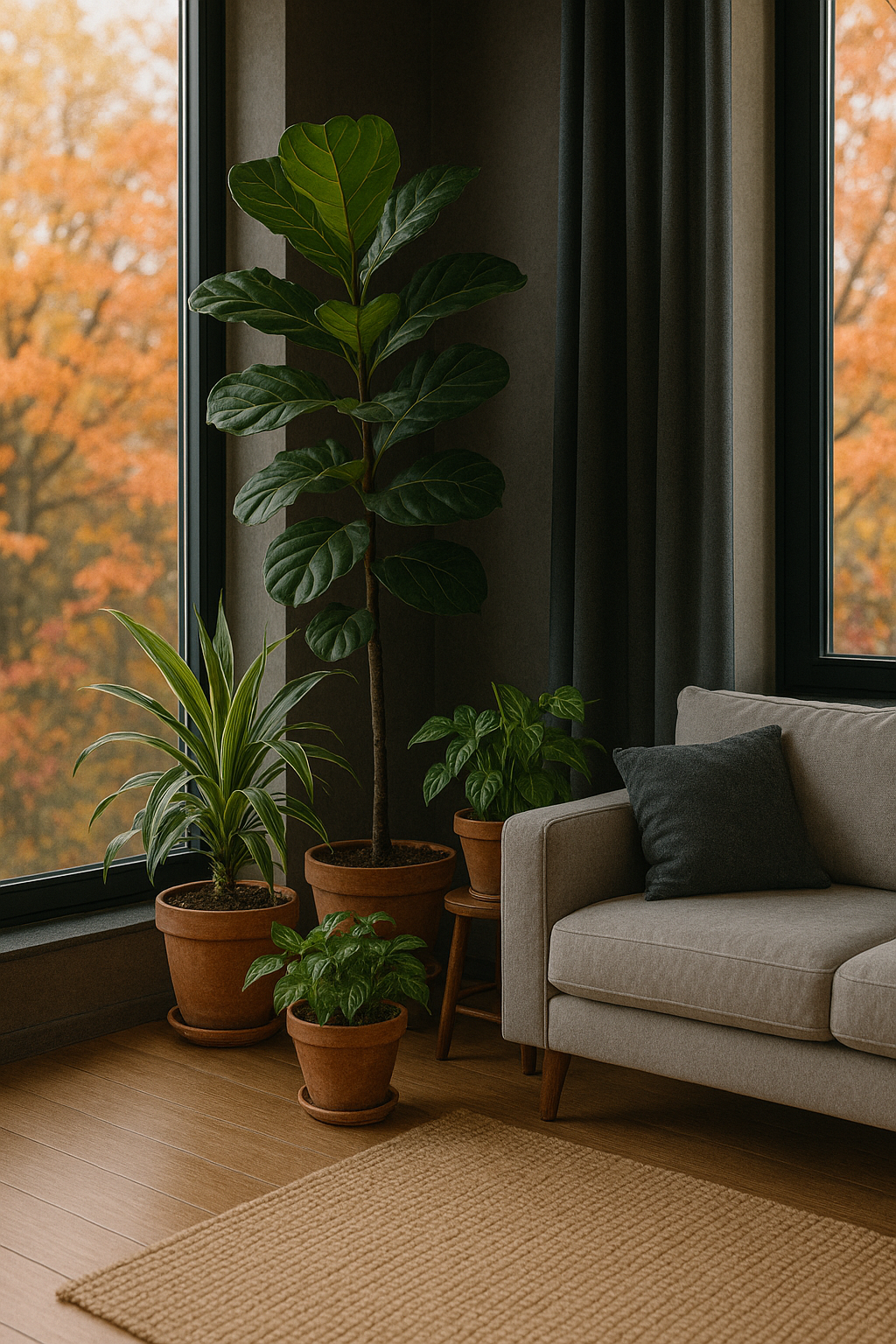Taking care of indoor plants in an apartment can feel straightforward—until the seasons shift. Whether it’s the dry heat of winter or the harsh light of summer, each season presents unique challenges that affect how your plants grow and thrive indoors.
This article will guide you through adapting your care routine for apartment plants throughout the year, helping you keep them healthy and happy no matter what the weather’s like outside.
Understanding How Seasons Impact Indoor Plants
Plants are sensitive to changes in light, temperature, humidity, and watering frequency—all of which fluctuate with the seasons. In an apartment, these shifts might be subtle, but they’re still significant.
Here’s a breakdown of what changes most:
- Light: Days are longer in summer and shorter in winter. This can affect a plant’s growth, especially for sun-loving varieties.
- Temperature: Indoor heating or cooling systems can cause air to become too dry or too hot for certain plants.
- Humidity: Seasonal heating in winter reduces humidity, while spring and summer may increase it.
- Water needs: Plants grow faster in spring and summer and require more water. In winter, growth slows, and overwatering becomes a risk.
Let’s explore how to adjust your plant care throughout the year.
Spring: Time to Wake Up and Refresh
Spring is a time of renewal—for both you and your plants. As temperatures rise and daylight hours increase, your plants begin to come out of their dormant winter phase.
What to Do in Spring:
- Increase watering gradually as the soil dries out more quickly.
- Resume fertilizing: Use a gentle, diluted fertilizer once a month to support new growth.
- Repot if necessary: If roots are circling the pot or water drains too slowly, spring is the ideal time to replant.
- Prune dead or damaged leaves that accumulated during winter.
- Rotate your plants regularly to ensure even exposure to sunlight as it becomes more intense.
Spring is also a great time to introduce new plants, as they’ll have a full growing season to adjust.
Summer: Growth and Heat Management
Summer is when most indoor plants thrive, especially tropical and sun-loving species. However, heat and direct sun through windows can cause problems if not managed carefully.
Summer Plant Care Tips:
- Water more frequently, but avoid soggy soil. Let the top inch dry out between waterings.
- Check for signs of sunburn on leaves—brown or crispy edges may indicate too much direct sunlight.
- Use sheer curtains to filter strong sunlight near windows.
- Mist plants that enjoy humidity, like ferns or calatheas, especially during heat waves.
- Inspect for pests: Warm, humid conditions attract spider mites, aphids, and fungus gnats.
Keep in mind that air conditioning can dry the air quickly. Consider using a humidity tray or humidifier to maintain balance.
Autumn: Slow Down and Prepare for Rest
In fall, the light begins to fade and temperatures drop, signaling plants to slow their growth. This is a transitional period—ideal for preparing your plants for their dormant phase.
Fall Care Guidelines:
- Reduce watering frequency as the soil begins to stay moist longer.
- Stop fertilizing around mid-fall to avoid overstimulating plants.
- Clean and dust leaves to maximize light absorption as days grow shorter.
- Move light-loving plants closer to windows to catch every bit of available sunlight.
- Watch for drafts from windows or doors and move sensitive plants away from chilly areas.
Fall is also a good time to assess your plants’ health and remove any signs of disease or pest damage before winter sets in.
Winter: Rest, Recovery, and Caution
Winter is the most challenging season for indoor plants in apartments. Dry air, low light, and fluctuating indoor temperatures can stress even the hardiest species.
Tips for Winter Plant Survival:
- Cut back on watering: Most plants go semi-dormant and need far less water.
- Avoid fertilizing completely during the winter months.
- Keep plants away from radiators and heaters, which can scorch leaves or dry out soil too quickly.
- Use grow lights for light-loving plants—set a timer to mimic longer daylight hours.
- Increase humidity with a room humidifier or grouping plants together to create a microclimate.
- Rotate plants regularly to encourage even light exposure from shorter days.
Your goal in winter is to maintain stability—not push your plants to grow.
Bonus Tip: Track Seasonal Changes with a Plant Journal
One of the best ways to care for plants through seasonal transitions is to keep a simple plant care journal. Note when you last watered, fertilized, or repotted. Track any signs of stress, pests, or yellowing leaves. Over time, you’ll start to see patterns that help you adjust more precisely each season.
You can also use plant care apps to receive reminders and tips based on the seasons and your region’s climate.
Common Mistakes to Avoid During Seasonal Changes
- Watering too much in winter: This is one of the main causes of root rot.
- Not adjusting light placement in fall/winter: Plants often need to be closer to windows in darker months.
- Ignoring humidity: Most houseplants prefer 40–60% humidity—lower levels can cause browning tips.
- Fertilizing during dormancy: This can do more harm than good when plants aren’t actively growing.
By staying mindful of your plant’s natural rhythms and how your apartment environment shifts throughout the year, you’ll avoid these common pitfalls and enjoy a thriving indoor jungle all year long.
Let Your Apartment Garden Thrive Year-Round
Seasonal changes might seem like a hurdle for indoor plant lovers, but they’re also an opportunity to become more in tune with your plants. By understanding what your greenery needs in each season—and making small adjustments—you can ensure a vibrant, healthy apartment garden through spring, summer, fall, and winter.
After all, caring for plants isn’t just about keeping them alive. It’s about growing a little bit of nature in your own space, every day of the year.
